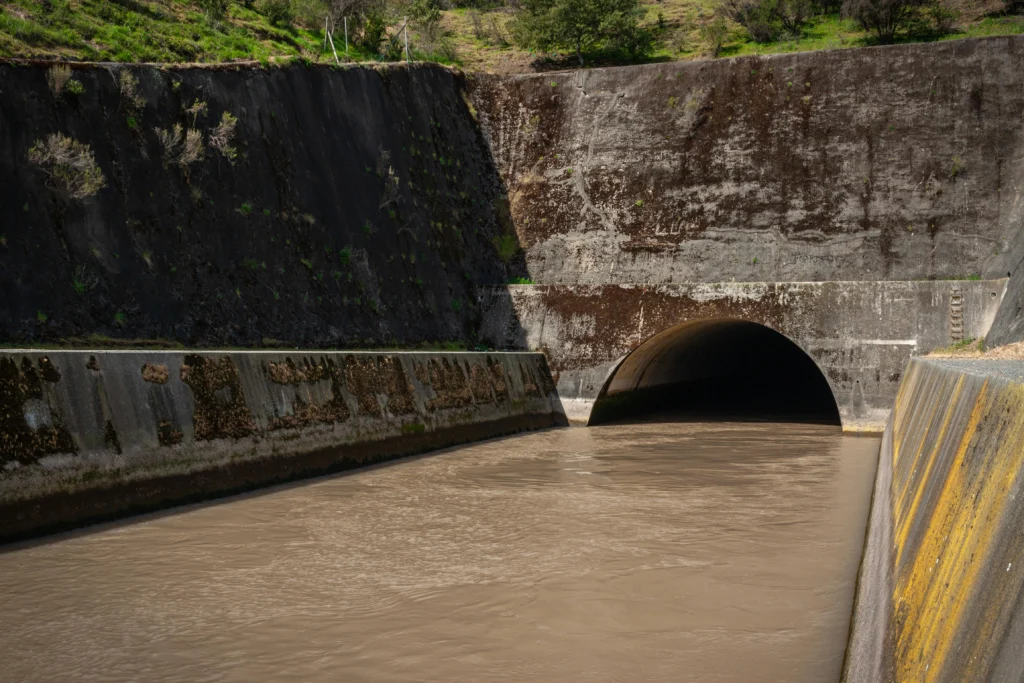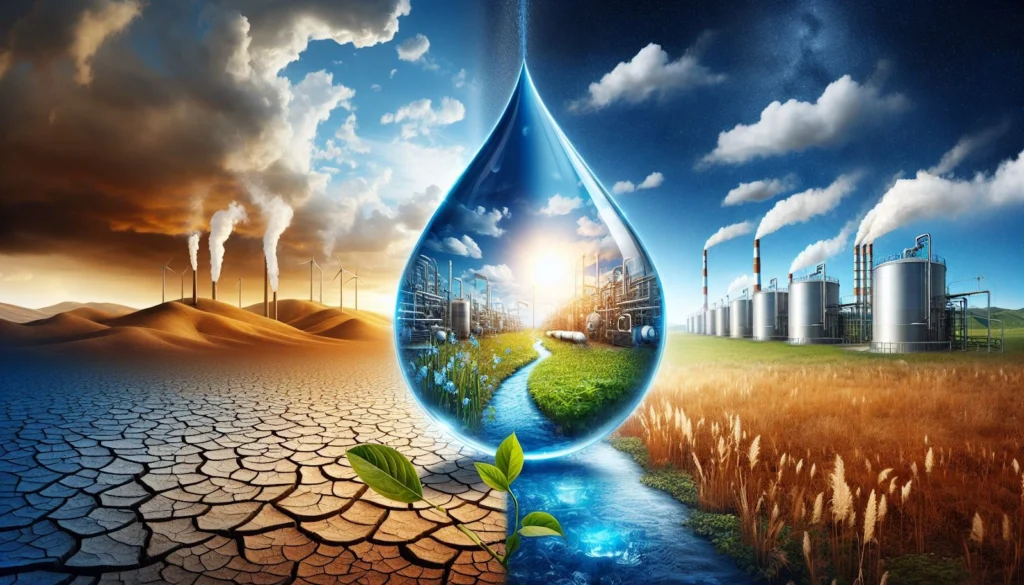We are facing a global water crisis of unprecedented proportions. As water scarcity becomes an ever-growing concern, industries worldwide grapple with the challenge of effectively managing their wastewater. Zero liquid discharge has emerged as a game-changing solution to address this issue. This innovative approach aims to eliminate wastewater discharge, transforming industrial processes and significantly impacting water conservation efforts.
The Global Water Crisis and Industrial Wastewater

Current State of Water Scarcity
As the world’s population grows, so does the demand for water across agricultural, industrial, and domestic sectors. This increasing pressure is pushing many regions towards water stress, defined as the ratio of freshwater withdrawals to renewable freshwater resources.
The situation is particularly dire in the Middle East and North Africa, where several countries have withdrawal rates exceeding 100% of their renewable resources. This means they’re either unsustainably extracting from existing aquifers or relying heavily on desalination. In contrast, regions like Northern Europe, Canada, and much of Sub-Saharan Africa typically experience low to medium water stress.
Industrial Water Consumption Trends
Industries play a significant role in global water consumption. We use water for various industrial applications, including dilution, steam generation, washing, and cooling of manufacturing equipment. The United States and China lead in industrial water withdrawals, with many countries across the Americas, Europe, and East Asia using more than one billion cubic meters annually for industrial purposes.
Interestingly, industrial water usage tends to dominate in high-income countries while remaining relatively small in low-income nations. This disparity highlights the complex relationship between economic development and water resource management.
Environmental Impact of Wastewater Discharge
The environmental consequences of untreated industrial wastewater discharge are severe. When industries release untreated water, it harms our most vital resource – clean water. Key parameters such as oxygen demand and suspended solids are severely affected.
Untreated wastewater can lead to eutrophication, a process where excessive nutrients fuel algal blooms, depleting oxygen in water bodies. This phenomenon threatens freshwater ecosystems, disrupting their natural balance. For instance, over 90% of rivers in Poland still face threats from eutrophication caused by untreated municipal wastewater.
At Scaleban, we recognize these challenges and offer a unique, non-conventional, sustainable solution to achieve water conservation and Zero Liquid Discharge. Our approach eliminates the need for conventional technologies like wastewater RO and Multiple Effect Evaporators (MEE), which consume excessive power and steam, leading to high CO2 emissions – a global concern we’re committed to addressing.
Schedule A Free Consultation Today for Effective Waste Water Management!
Zero Liquid Discharge: A Sustainable Solution

Principles of ZLD Technology
We’re witnessing a revolutionary approach to wastewater management with Zero Liquid Discharge (ZLD) systems. These innovative systems aim to eliminate all liquid effluent from a plant completely, reducing wastewater volume and producing a clean stream of water suitable for reuse. The fundamental principle of ZLD is to recover and recycle water while converting contaminants into solid waste.
ZLD System Components and Process Flow
A typical ZLD system consists of several key components working in tandem. The process usually begins with pretreatment, where we use clarifiers or reactors to precipitate metals, hardness, and silica. Next, we employ ultrafiltration to remove suspended solids, followed by reverse osmosis (RO) for primary concentration. Brine concentrators and evaporators further reduce waste volume, and finally, crystallizers boil off the remaining liquid, leaving us with a dry, solid cake for disposal.
Advantages Over Conventional Wastewater Treatment
ZLD systems offer significant advantages over conventional wastewater treatment methods. They can save up to 2-5 times the capital expenditure of traditional technologies and are highly efficient in recovering high-quality water and salts. Moreover, ZLD systems are projected to grow at a rate of 12% per year through 2030, driven by technological advances and rising water costs.
Schedule a Free Consultation Today for Effective Waste Water Management!
Overcoming Challenges in ZLD Adoption
High Initial Capital Costs
Adopting ZLD systems requires significant investment, encompassing engineering, procurement, and construction (EPC) services for customization to specific industrial needs. The capital-intensive nature of sourcing materials, system design, and installation contributes to high initial costs. However, these costs can be mitigated by long-term savings compared to conventional wastewater treatment methods.
Energy Intensity Concerns
ZLD processes are energy-intensive, particularly in the evaporation and condensation stages. Thermal evaporative processes can account for more than 90% of the total operating cost for a ZLD plant. To address this, emerging technologies utilize low-grade or renewable energy sources, such as waste heat, solar power, and geothermal energy, to reduce the greenhouse gas footprint of ZLD systems.
Technological Limitations
ZLD systems may not be universally applicable, particularly for waste with high concentrations or toxicity. Additionally, the complexity of ZLD systems requires skilled personnel for operation and maintenance, which can be challenging to find and retain. To overcome these limitations, companies optimize energy efficiency by minimizing thermal requirements in the evaporation stage.
Regulatory and Policy Support
The regulatory environment can be complex, with different agencies having varying requirements for wastewater treatment. However, in countries like Thailand, regulatory frameworks have been established to promote sustainable industrial development and reduce environmental impacts. These regulations require industries to use ZLD systems to reduce wastewater discharge and promote treated wastewater reuse.
Zero Liquid Discharge technology has a significant impact on addressing the global water crisis. It offers a promising approach to managing industrial wastewater, conserving water resources, and reducing environmental pollution. The successful implementation of ZLD systems across various industries demonstrates its potential to revolutionize water management practices and contribute to sustainable development.
Looking ahead, the adoption of ZLD technology is likely to grow, driven by increasing water scarcity and stricter environmental regulations.
